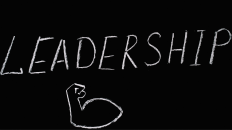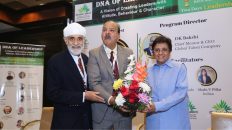A recent employee survey showed that 66% of respondents found it challenging to build professional connections virtually. In comparison, nearly 75% of those who participated in the survey said face-to-face meetings were more effective than online communication. So how can managers be effective leaders in an age when work travel is no longer necessary? The answer is in planning offsite leadership strategy retreats. Let’s dive in to understand why Offsite leadership strategy retreats are essential and some of the best practices in ensuring productive retreats.
Why Off-Site Leadership Strategy Retreats are Important
If there ever was a doubt, the isolation during the pandemic proved that in-person collaboration is crucial to boosting productivity and fostering team building. Findings from research reiterate that in-person interaction builds not only social capital but also ignites new ideas, spreads knowledge, and promotes collaboration.
In-person collaboration leads to employee learning and engagement, resulting in lower turnover and higher attendance and morale. However, in the post-pandemic world, where nearly 37% of firms surveyed plan to institute permanent remote or hybrid work with no offices, it isn’t easy to get teams together.
Also read: Sob stories of Indians hit by Meta layoffs out as ‘no idea what comes next’
So, how does one solve this dilemma at the team and management levels?
Strategic offsite retreats come to the rescue. For the best results you need to get them right, here are a few best practices to get the most out of the offsite retreats.
How to Win Off-Site Leadership Strategy Retreat?
Planning – Too often, organisations organise offsites without a plan or an agenda—the lack of clarity results in each person arriving for the meeting with their own agenda and expectations. The result is an event that disappoints everyone and achieves nothing.
Drafting an agenda keeping the business outlook in mind is a step for a fruitful offsite.
Designing Meetings with the Right Agenda –
To do this effectively, the organiser must answer three basic questions: Who should be there? What should they be talking about, when, and why?
Second, compile and distribute relevant data.
Third, create a structure for the meeting that will compel progress. Companies often invite top leaders and outside counsel to establish strategic priorities for offsite meetings, but this process is a tad dated.
For an effective offsite design, the organiser must understand the objective of the meeting and the desired outcomes to be derived.
Understanding the objective involves asking several questions, ranging from topics of interest to open issues for discussion. The answers to these questions will help arrive at the purpose of the meeting, which in turn will help determine the plan and the participants.
Balancing Personalities – Team Leaders and the Top Executives in a room would have several high-D personalities, each influenced by their analytical data and underlying political and emotional factors. Managing these personalities is crucial to preventing the meeting from derailing or having executives clash on ideas based on rank/leadership status.
In this article, the author has gone over the best practices when running an offsite retreat to maximize productivity.
Creating a Technology-Free Experience – As most teams still work remotely, in-person time is now more valuable, so those planning a meeting shouldn’t waste time on anything they can do virtually. For instance, rather than reviewing 100 PowerPoint slides, it is vital to hold conversations and conduct team-building activities to enable managers to engage with one another. It is also essential for meeting planners to create technological breaks in offsites to eliminate distractions, increase collaboration between team leaders and promote innovative thinking.
Disconnecting From Their Jobs – At work, Team Leaders and Executives continuously multitask to ensure that a company’s operations are sailing smoothly. Offsite provides a beautiful opportunity for them to disconnect from their everyday routine and focus all energies on the agenda of the offsite and put their best foot forward.
Staying on Track – If not monitored, it’s easy for offsite meetings to take nonlinear paths, rapidly jumping from one topic to the next. Meeting managers must be bullish about sticking to the pre-determined schedule through exercises, frameworks, and other breakout sessions to keep the conversation on course.
Maintaining High Energy – When most leaders think of offsite, they primarily think about the fun and frolic – an all-paid vacation. It is essential for companies not to disillusion the participants yet ensure the real agenda of the offsite is met. Sharing the plan ahead of the offsite helps set realistic expectations. To maintain high energy levels that augment increased collaboration and productivity through offsite meetings to need to kick it off right. Use of Ice Breakers to help people let down their barriers, open up their minds, engage and participate with gusto.
Quantifying Opinions
Offsite meetings encourage discussions, arguments, and differences in opinions. All are welcome and much desired but become detrimental when you cannot arrive at a conclusion or solution. The use of a voting system in such a scenario comes in handy. It validates opinions across team leaders and quantifies them in the company. In addition, quantifying ideas also helps bring forth important issues requiring redressal. An anonymous keypad voting system can quantify opinions amongst the meeting participants effectively.
Focusing on Implementation – Most strategy meetings at offsites usually focus on strategic plans that outline the company’s next growth stage through new ideas and development. However, implementation is left out, failing to give leaders the tools to create a bridge between idea/ suggestion and execution. One way to effectively overcome this bottleneck is to draft and agree on an action plan. Decide upon people/teams their specific roles and responsibilities while holding leaders accountable through milestones and metrics.
After the Meeting – The organiser must follow through for an offsite to be truly successful. This step is crucial to reiterate the importance of the meeting and the learnings gleaned. It also ensures that the best practices discussed in the offsite find implementation, such as developing action steps, communicating the strategy clearly and keeping the initiatives on course.
Conclusion
In the modern age, where remote/hybrid work is the norm, it is increasingly difficult for leaders and managers to get the best out of their teams. Thus, executives need to work with coaches to find the best solutions to their needs. For Organisations to capture the benefits of in-person collaboration, it is vital to conduct offsite leadership retreats to discuss the future strategy and goals of the organization.
Stay connected with us on social media platform for instant update click here to join our LinkedIn, Twitter & Facebook
























